Can You Put a Pizza Stone in the Oven? Understanding Proper Usage and Care
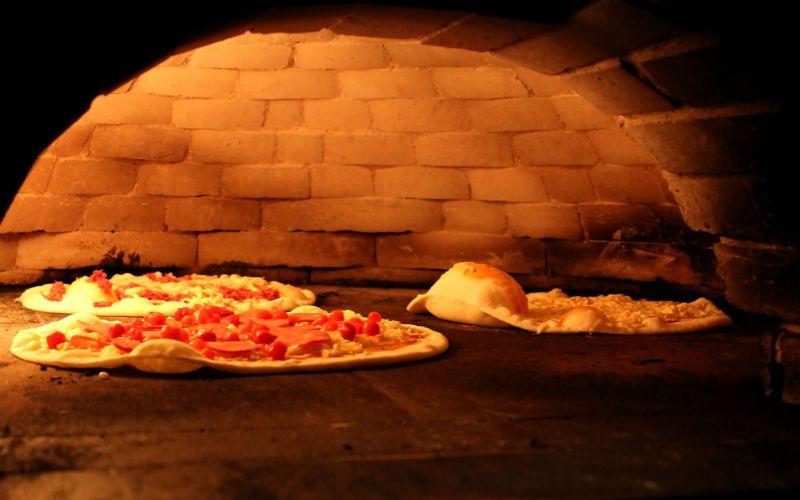
What is a Pizza Stone?
A pizza stone is a robust cooking surface used in ovens and grills, essential for achieving that authentic pizzeria-quality crust at home. It's designed to withstand high temperatures and distribute heat evenly, reducing cook times and mitigating thermal shock.
Different Types of Pizza Stones
Using your pizza stone in your oven, you create an environment similar to pizza ovens, drawing out moisture from the dough and providing the high heat needed for a perfectly cooked pizza.
Here is a summary of the key aspects of pizza stones to consider when shopping for one:
Materials:
- Cordierite - Naturally mined stone that is durable, retains heat well, and is resistant to thermal shock. Considered the best material for pizza stones.
- Ceramic - Affordable option that conducts heat evenly but is not as durable as other materials.
- Cast iron - Retains heat very well and heats up quickly, but heavier than other materials. Requires seasoning.
- Steel - Transfers heat very quickly for fast baking times, but can overcook some items. Durable but requires seasoning to prevent rust.
Shape:
- Rectangular - Offers more versatility for baking bread, calzones, etc. More surface area.
- Round/Square - Traditional shape, sufficient for personal pizzas. Less surface area than rectangular.
Size:
- Oven size - The stone should fit in your oven with at least 1 inch of clearance on all sides to allow proper air circulation. Measure your oven first. A typical home oven can fit a 14-16 inch pizza stone.
- Pizza size - Consider the size of pizzas you want to make. 12-14 inches is common. Allow 2-3 inches of extra space on the stone for launching the pizza. So a 14-16 inch stone works well for 12 inch pizzas.
Thickness:
- Thicker stones (0.5-0.75 inches) retain heat better.
- Thinner stones heat up faster but don't retain heat as well.
Other Considerations:
- Surface texture affects crust quality - coarser is better
- Stones with handles are easier to maneuver
- Stones that can be used in ovens and on grills offer more versatility

How Does a Pizza Stone Work?
A pizza stone is a versatile baking tool that provides a pizzaiolo experience in your kitchen. It is usually made from ceramic or cordierite and mirrors the heat properties of a traditional pizza oven. Essentially, the stone brings the high-temperature cooking environment of a pizzeria right to your conventional oven or grill.
A pizza stone mimics a brick oven by creating a hot, heat-retaining cooking surface that crisps pizza dough fast for restaurant-quality crust texture at home. Rotating helps prevent uneven cooking.
How to Use a Pizza Stone

Using a pizza stone is a straightforward method to achieve a crispy crust. Here's how you can use these tools effectively in your conventional oven or grill.
1. Preheating Your Stone
Firstly, you should preheat your pizza stone before cooking. Place it in the oven and set your temperature to about 500ºF. Allow it to heat for at least 30 minutes to an hour, as direct contact with heat is crucial for a crispy outcome.
2. Preparing Your Pizza
While preheating, prepare your pizza dough. For a crisp crust, the thickness of your dough should be even. If using a frozen pizza, make sure it's thawed properly to ensure even cooking.
3. Transferring Pizza onto the Stone
To transfer the pizza, generously dust your pizza peel with cornmeal or semolina flour. This helps the pizza slide easily off the peel. Alternatively, you can use parchment paper for a non-stick surface, but remember to remove it a few minutes into cooking for a crispier base.
4. Cooking the Pizza
Slide your pizza onto the stone and close the oven. Cooking times vary, but generally, a thin pizza should be done in 7-12 minutes. Keep an eye on the crust, which should turn golden brown when it's ready.
Remember, whether using a grill or an oven, maintaining consistent heat is key for the perfect crispy crust.
5. Cool, clean and store
Before removing the pizza, allow the oven and the pizza stone to cool completely.
Gently scrape off any stuck-on cheese or toppings with a plastic scraper or brush. Avoid using anything metal or abrasive that could scratch the stone.
Wipe the stone down with a slightly damp paper towel or cloth. Be very careful not to use too much water, as moisture can negatively impact the stone over time. If there are stubborn spots, make a paste of baking soda and water and use a soft brush to gently scrub. Rinse and wipe dry.
Ensure the stone is completely dry before placing it back in the oven. Any residual moisture could affect the crispiness of the crust.
Consider putting a piece of parchment paper between the pizza and the stone for easier cleanup, but don't put it directly on the hot stone or it could burn. Brush excess flour and cornmeal off the stone rather than leaving it directly on the surface to prevent burning.
Recipes You Can Use with Your Pizza Stone
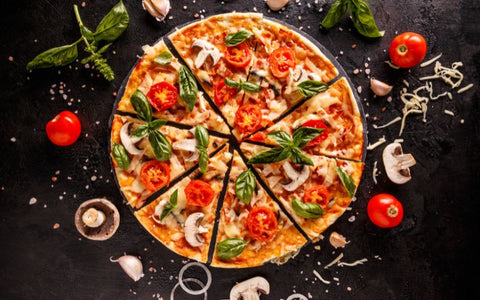
Homemade Pizza: Crafting your homemade pizza begins with a base of dough. You can create your own or use pre-made varieties. Once your dough is ready, spread your favorite sauce on top, apply a generous layer of cheese, and add toppings to taste. Pizza stones are famous for mimicking restaurant-quality crusts.
Bread: Artisan bread gains a remarkable crust when baked on a pizza stone. Just shape your bread dough, allow it to rise, and then transfer it to the preheated stone for baking.
English Muffin Pizzas: For a quick snack, English muffins can serve as a handy base for mini pizzas. Add sauce, cheese, and mini toppings for a delightful treat.
Flatbreads: Whether you're making a simple garlic butter flatbread or a more complex one with assorted toppings, the pizza stone will give you a wonderfully crisp base.
Quesadillas: Place your tortilla filled with cheese and other ingredients directly on the pizza stone; they come out with a perfect crunch.
Here's a breakdown for your pizza stone culinary adventure:
- Bread: Heat the stone, place the risen dough on the stone, and bake until the crust is hard and the loaf sounds hollow when tapped.
- English Muffin Pizzas: Assemble on stone and bake until the cheese is bubbly.
- Flatbreads: Prep your dough, add flavors or toppings, and bake until crisp.
- Quesadillas: Heat stone, construct quesadilla with fillings, and bake until the cheese is melted and the exterior is crispy.
Perfect Pizza Stone Accessories
Having the right accessories can make your experience smoother and more enjoyable. Here’s a quick rundown of the essential tools to accompany your pizza stone.
Pizza Peel: To transfer your pizza to and from the hot pizza stone, a pizza peel is indispensable. A wooden peel is perfect for preparation, while a metal peel is ideal for transferring the cooked pizza out of the oven due to its thin, sturdy edge.
Cutting Tools:
- Pizza Cutter: An efficient pizza cutter helps you slice your creation with precision.
- Spatula: If a cutter isn’t enough, a sharp spatula can assist in serving slices without damaging your stone.
Utensils:
- Tongs: Useful for adjusting the pizza’s position and for ensuring an even bake.
- Metal Pan: In case you want to cook additional toppings separately, or if deep-dish pizza is on the menu.
Maintenance Tools:
- Cleaning Brush: After use, it's crucial to clean the stone when it has cooled. A brush designed for pizza stones helps remove stuck-on pieces without damaging the surface.
Kitchen Tool: An all-purpose kitchen tool can double as a dough cutter or for fine adjustments to toppings before the bake.
Utilizing these accessories will ensure a seamless transition from countertop to oven and onto your plate, crafting the perfect pizza experience.
How to Take Care of and Store Your Pizza Stone?
Proper care extends the life of your pizza stone, ensuring many years of perfectly browned pizzas. When cleaning, never use soap or detergents, as your stone is porous and can absorb flavors. After use, let the stone cool down to avoid cracking due to temperature shock.
Cleaning:
- Scrub: Gently scrub off stuck-on food using a plastic scraper or nylon pad.
- Baking Soda: For tough stains, make a paste with water and apply it to the affected area.
- Rinse: Rinse with warm water thoroughly to remove any residue.
Do not place your pizza stone in the dishwasher as the harsh chemicals and excessive moisture can damage it.
Seasoning:
- Initially, your stone will look clean and flawless. Over time, as it becomes seasoned, it will darken—this is normal.
- There’s no need to apply oils or fats for seasoning; the natural process of cooking pizza will season it over time.
Storage:
- Ensure your pizza stone is completely dry to prevent moisture buildup.
- Store in a dry, stable environment to minimize the risk of accidental drops or temperature changes that could cause cracks.
By following these guidelines, your stone will stay in prime condition, ready for your next purchase of fresh dough for that perfect homemade pizza experience.
Frequently Asked Questions
Are pizza stones oven-safe?
Yes, pizza stones are designed to be safe for oven use. They are made of durable materials that can handle the high temperatures of your home oven.
Is it necessary for you to preheat a pizza stone before baking?
You should preheat your pizza stone before baking. Heating it in the oven for at least 30 minutes is ideal to achieve a well-cooked crust.
Is it necessary to use a pizza peel with a pizza stone?
While not strictly necessary, using a pizza peel can help you transfer your pizza to and from the hot stone with ease and reduce the risk of burns.
How do you cook a frozen pizza on a pizza stone?
To cook a frozen pizza on a pizza stone, place the stone in the oven and preheat it. Then, place the frozen pizza directly on the hot stone and bake according to the pizza's instructions.
How long does it typically take to cook pizza on a pizza stone?
The cooking time will vary based on the pizza's thickness and your oven's temperature, but typically, pizza takes about 8 to 10 minutes to cook on a preheated pizza stone.


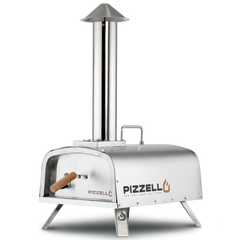
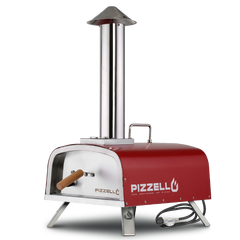
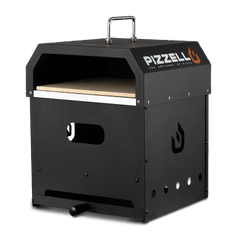
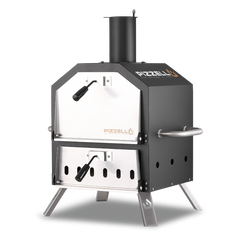
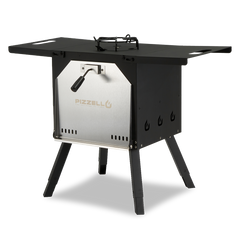



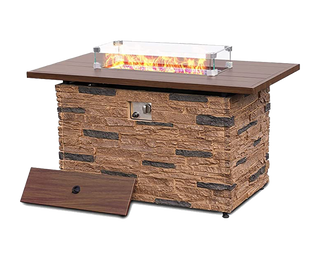

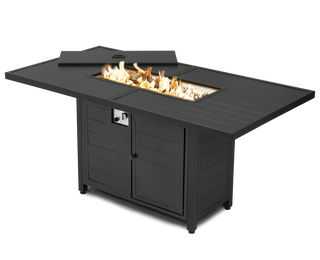

 Dining Table
Dining Table
 Cart
Cart
 Cart Pro
Cart Pro
 Pizza Stone
Pizza Stone
 Gas Burner
Gas Burner
 Pizza Peel
Pizza Peel
 Dining Chairs
Dining Chairs
 Wind Guard
Wind Guard
 Fire Glass Bead
Fire Glass Bead
 Waterproof Cover
Waterproof Cover















